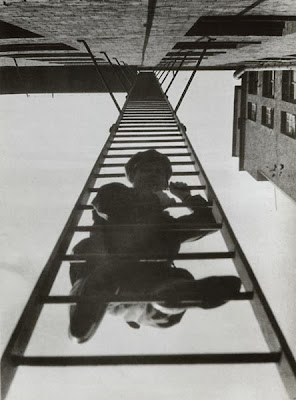Giuseppe Arcimboldo, Fire, 1566
Milo Manara (b. 1945), Gullivera
René Magritte, The Return of the Flame, 1943
Ed Ruscha, Los Angeles County Museum on Fire, 1968
Markus M. Krüger, Winter Drama, 2009
Neo Rauch, Suburb, 2007
Georges De la Tour, The Penitent Magdalen, 1638
Start a Fire
The Tiger Lillies - Start a Fire
Josephine Meckseper
"When a powder tower explodes don't overestimate the significance of the matches." - Ernst Jünger
Trop enflammé
Pierre Winther
Wilhelm Sasnal, Terrorist Equipment, 2000
Alex Andreev
Adolf Dietrich, Schiffsuntergang vor Berlingen, 1935
Thomas Cole, The Course of Empire Destruction, 1836
Weegee, Simply Add Boiling Water, 1937
Thomas Hoepker, View from Williamsburg, Brooklyn, to Manhattan, 11th September 2001
kennardphillipps, Photo Op, 2007
Ed Ruscha, Burning Gas Station, 1966
Salvador Dalí, Surrealist Gondola above Burning Bicycles, 1937
A drawing (charcoal, watercolor and pastel on paper) for a film project with the Marx Brothers, 1937.
Sigmar Polke, The Captain and the Burning Ship, 1973
George Frederick Watts, Satan, 1847
Edvard Munch, Self-Portrait in Hell, 1903
Man Ray, Portrait imaginaire de D. A. F. de Sade, 1938
Theodore de Bry, Scene of cannibalism, from 'Americae Tertia Pars...', 1592
Untitled
Nakajima Soyo, The Miyako1 Nenju Gyoji Gajo (Picture Album of Annual Festivals in the Miyako), 1928
Marianne von Werefkin, Police sentinel in Vilnius, 1914
Ludwig Meidner, The Burning City, 1912
Gerardo Dottori, Burning City, 1926
Bernhard Klein, Berlin 1943 (Burning City), 1947
Lee Miller, Women with Fire Masks, Downshire Hill, 1941
Yves Tanguy, Through Birds, Through Fire and Not Through Glass, 1943
Alexander Rodtschenko, Fire Escape, 1925
Milo Manara (b. 1945), Gullivera
René Magritte, The Return of the Flame, 1943
Lurid flames sweep San Francisco in William Alexander Coulter’s (1849-1936) panorama of the largest maritime rescue in United States history, where more than thirty-thousand people were taken from the shoreline between Fort Mason and the foot of Lombard Street. Mr. Coulter’s painting depicts the flotilla of rescue vessels ferrying survivors from the burning city to Sausalito.
Joseph Gandy, Soane's Bank of England as a ruin, 1830
On Christmas Day 1843, Joseph Gandy died in one of the windowless cells of a private asylum in Devon. He was the greatest perspective artist in the history of British architecture - dubbed "The English Piranesi" - and one of the great visionaries of the Romantic movement. No one knows where he is buried. Since the days of surrealism he has been a cult figure.
Joseph Gandy, Soane's Bank of England as a ruin, 1830
On Christmas Day 1843, Joseph Gandy died in one of the windowless cells of a private asylum in Devon. He was the greatest perspective artist in the history of British architecture - dubbed "The English Piranesi" - and one of the great visionaries of the Romantic movement. No one knows where he is buried. Since the days of surrealism he has been a cult figure.
Ed Ruscha, Los Angeles County Museum on Fire, 1968
Markus M. Krüger, Winter Drama, 2009
Neo Rauch, Suburb, 2007
Georges De la Tour, The Penitent Magdalen, 1638
Start a Fire
The Tiger Lillies - Start a Fire
Josephine Meckseper
"When a powder tower explodes don't overestimate the significance of the matches." - Ernst Jünger
Trop enflammé
Pierre Winther
Wilhelm Sasnal, Terrorist Equipment, 2000
Alex Andreev
Adolf Dietrich, Schiffsuntergang vor Berlingen, 1935
Thomas Cole, The Course of Empire Destruction, 1836
Weegee, Simply Add Boiling Water, 1937
Thomas Hoepker, View from Williamsburg, Brooklyn, to Manhattan, 11th September 2001
kennardphillipps, Photo Op, 2007
Ed Ruscha, Burning Gas Station, 1966
Gregory Crewdson, 2001
Salvador Dalí, Surrealist Gondola above Burning Bicycles, 1937
A drawing (charcoal, watercolor and pastel on paper) for a film project with the Marx Brothers, 1937.
Sigmar Polke, The Captain and the Burning Ship, 1973
George Frederick Watts, Satan, 1847
Edvard Munch, Self-Portrait in Hell, 1903
Man Ray, Portrait imaginaire de D. A. F. de Sade, 1938
Theodore de Bry, Scene of cannibalism, from 'Americae Tertia Pars...', 1592
Untitled
Nakajima Soyo, The Miyako1 Nenju Gyoji Gajo (Picture Album of Annual Festivals in the Miyako), 1928
Marianne von Werefkin, Police sentinel in Vilnius, 1914
Ludwig Meidner, The Burning City, 1912
Gerardo Dottori, Burning City, 1926
Bernhard Klein, Berlin 1943 (Burning City), 1947
Lee Miller, Women with Fire Masks, Downshire Hill, 1941
Yves Tanguy, Through Birds, Through Fire and Not Through Glass, 1943
Alexander Rodtschenko, Fire Escape, 1925










































































